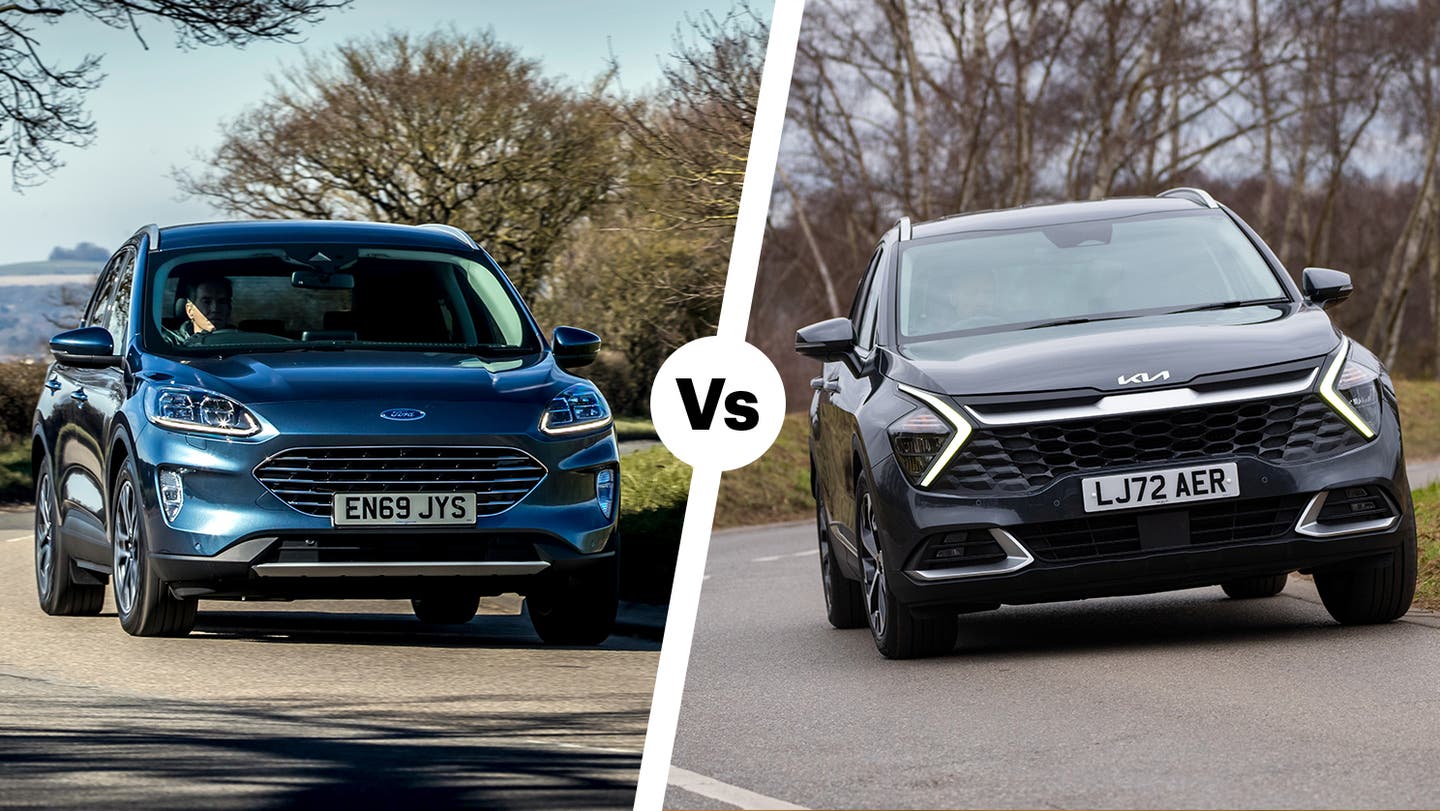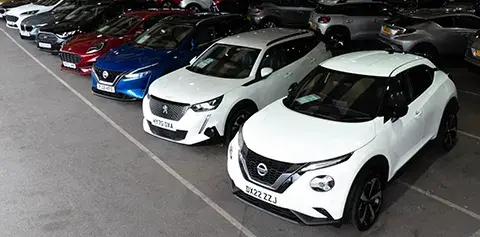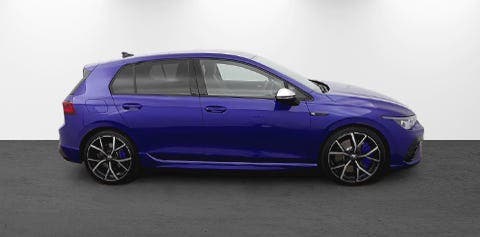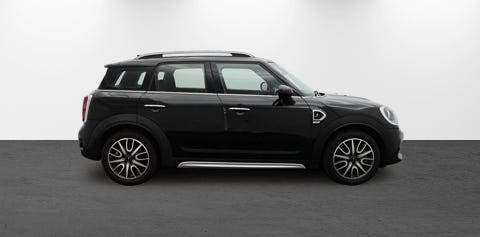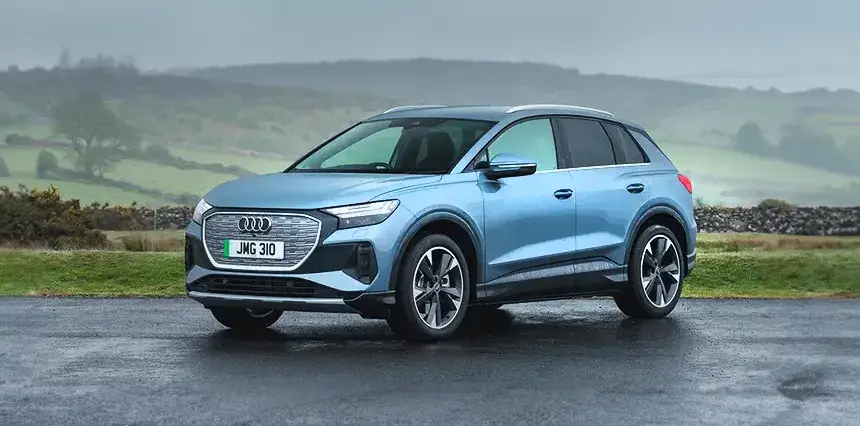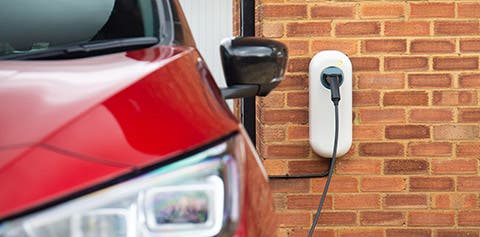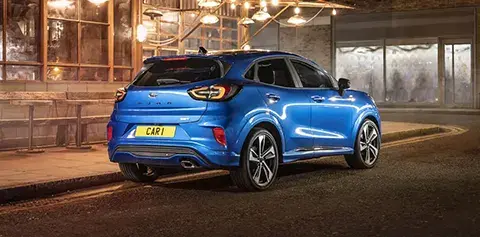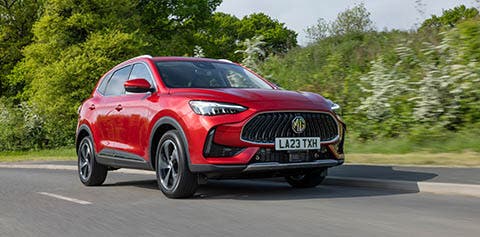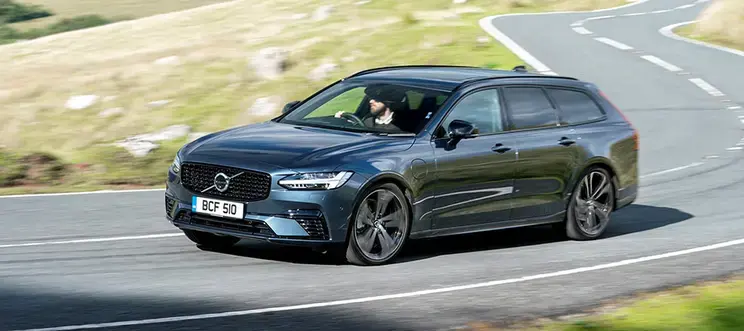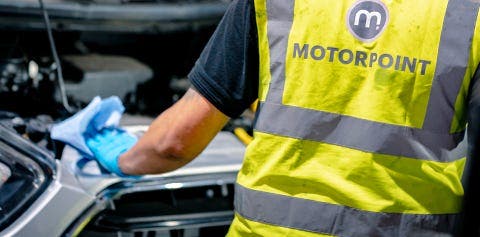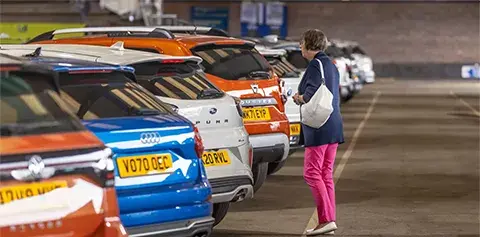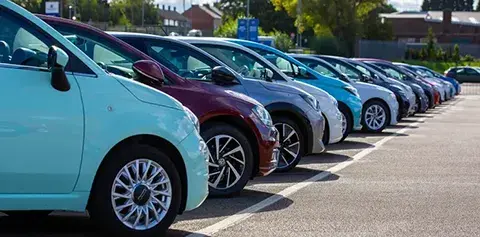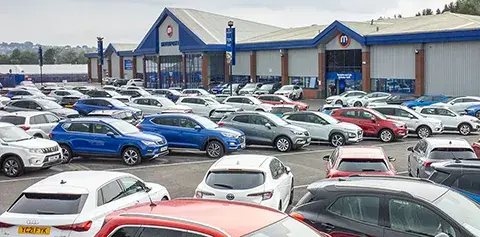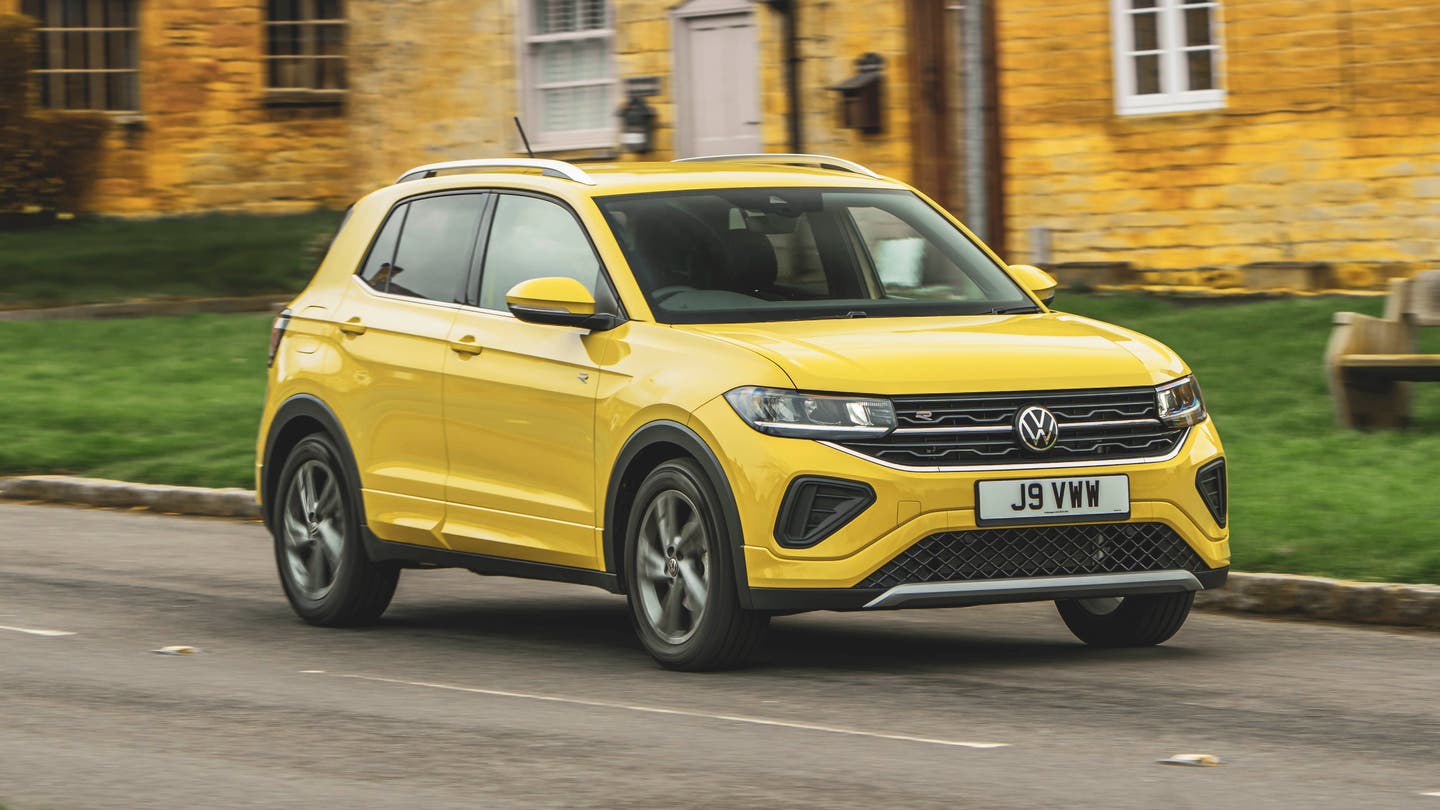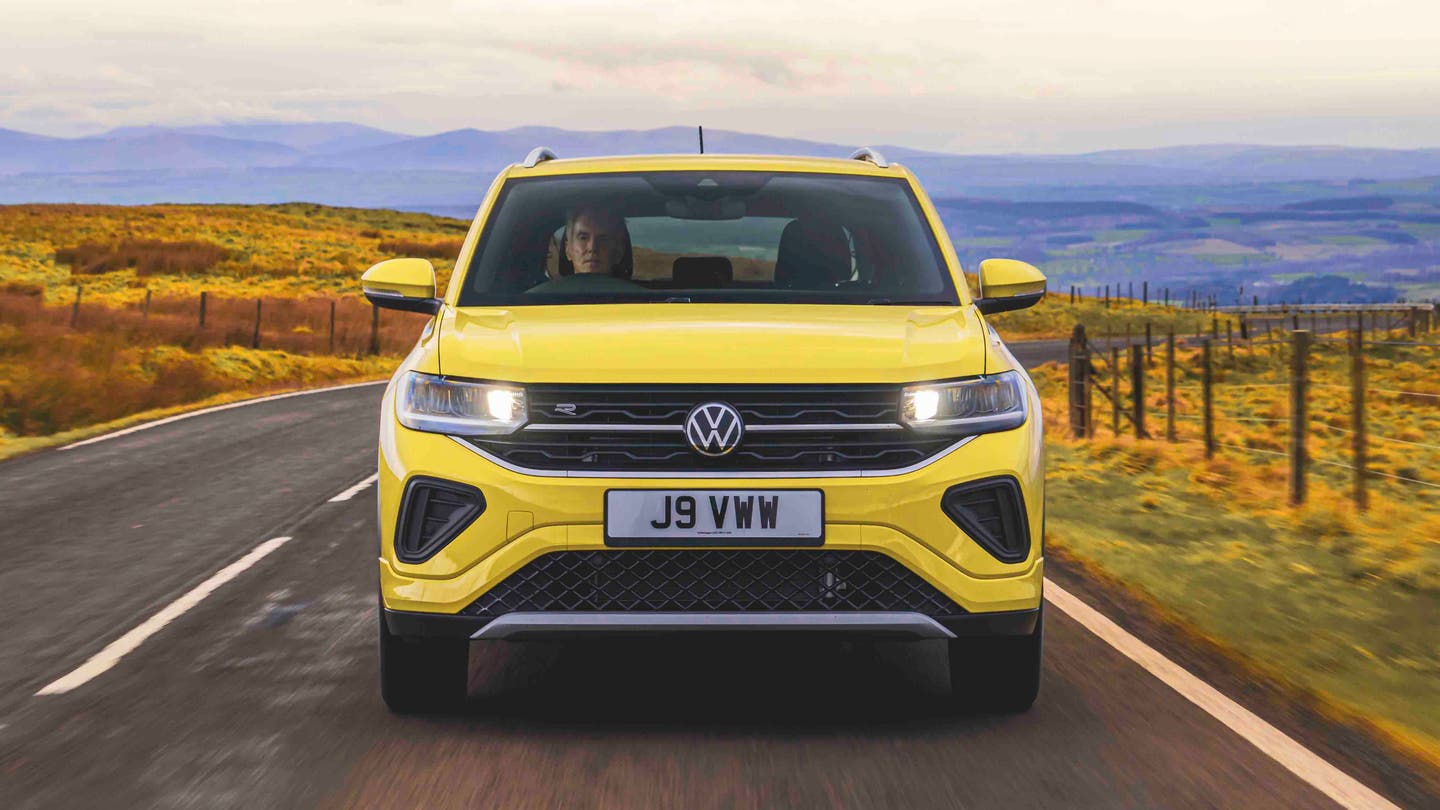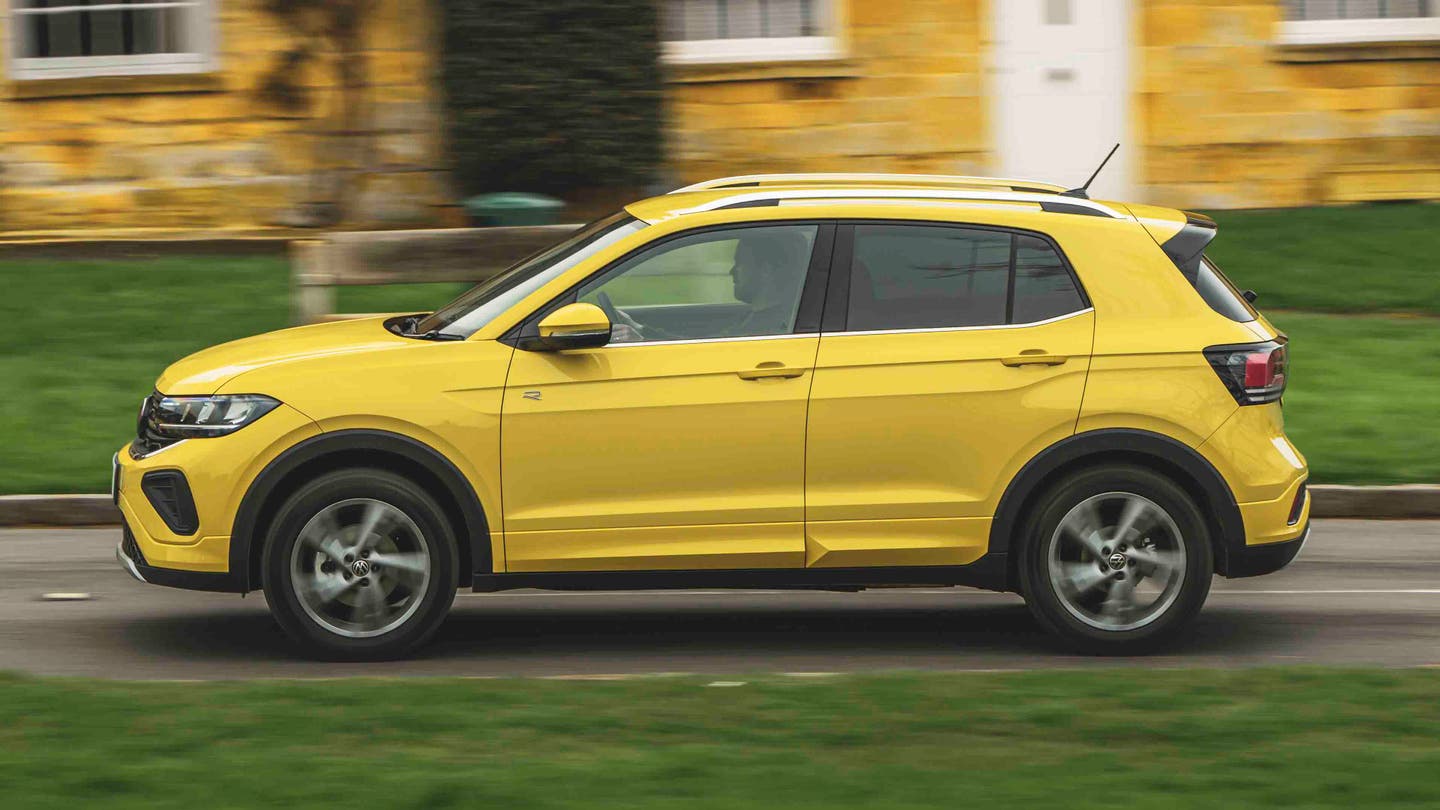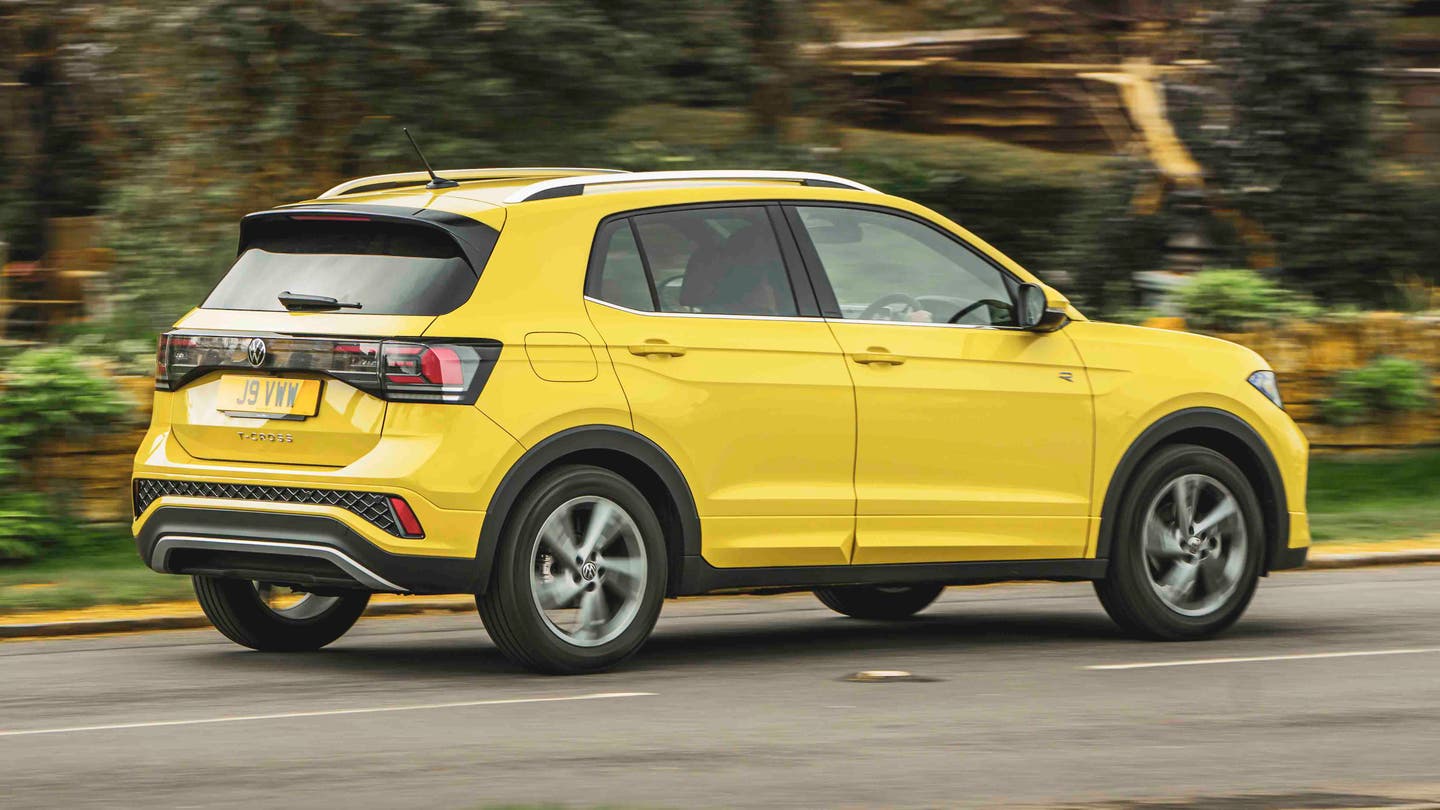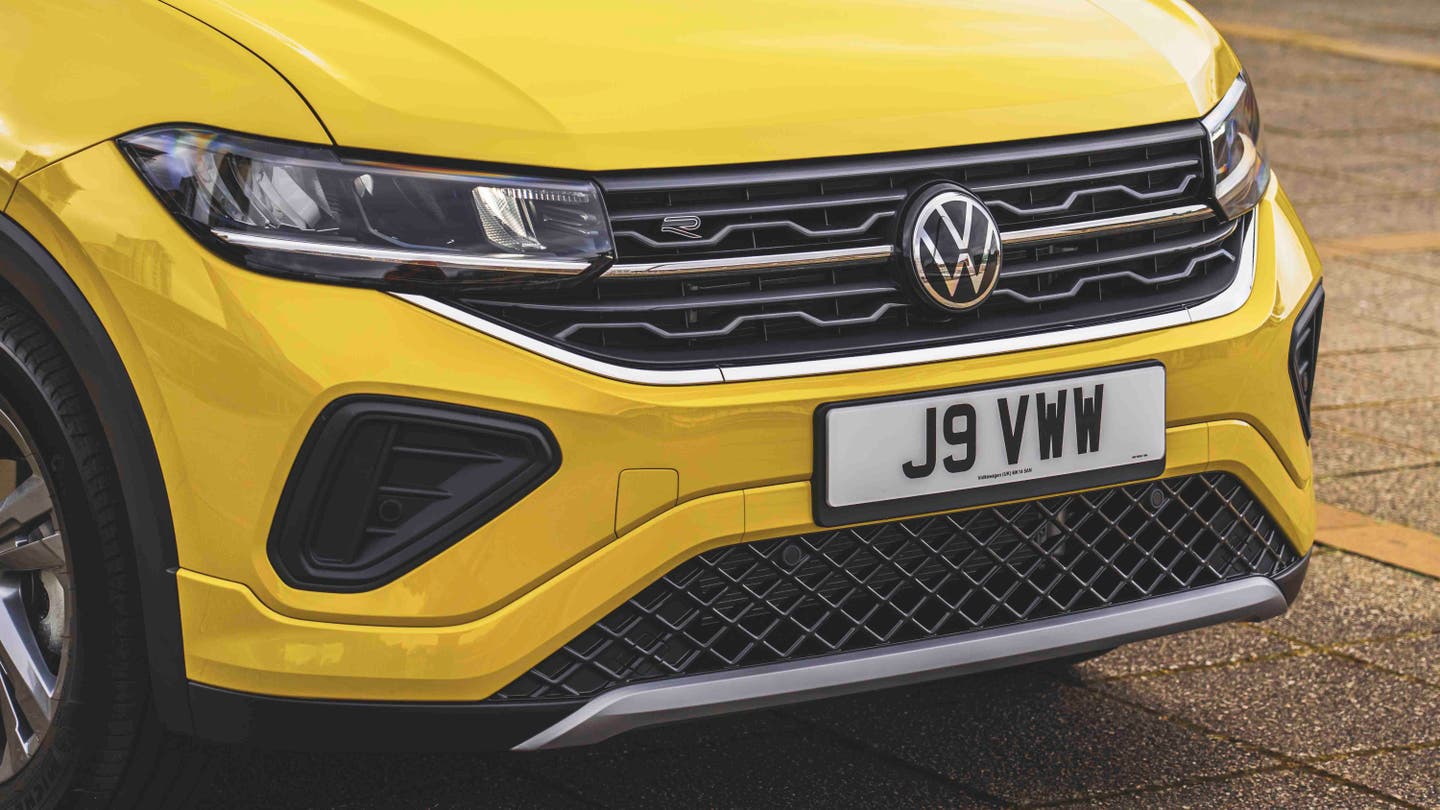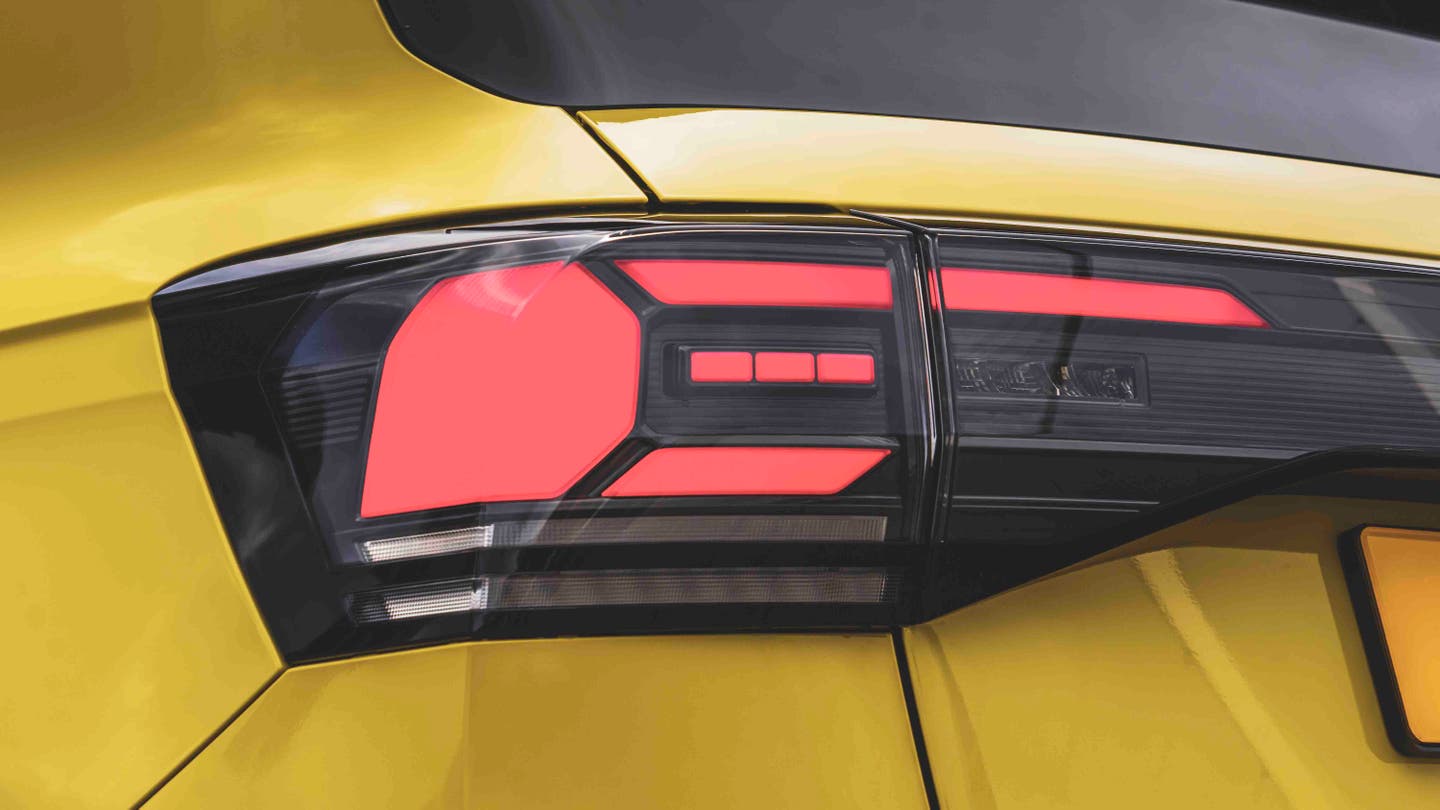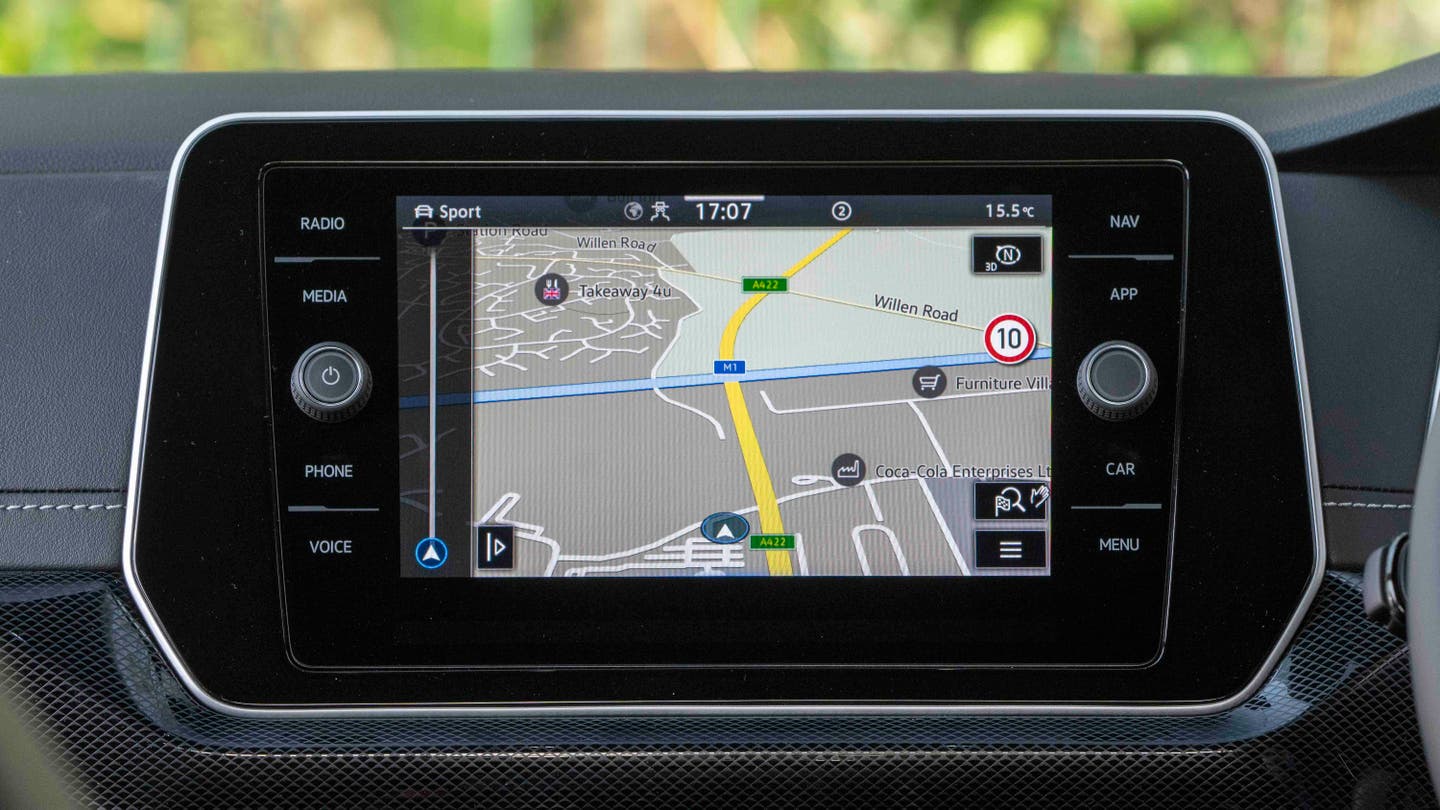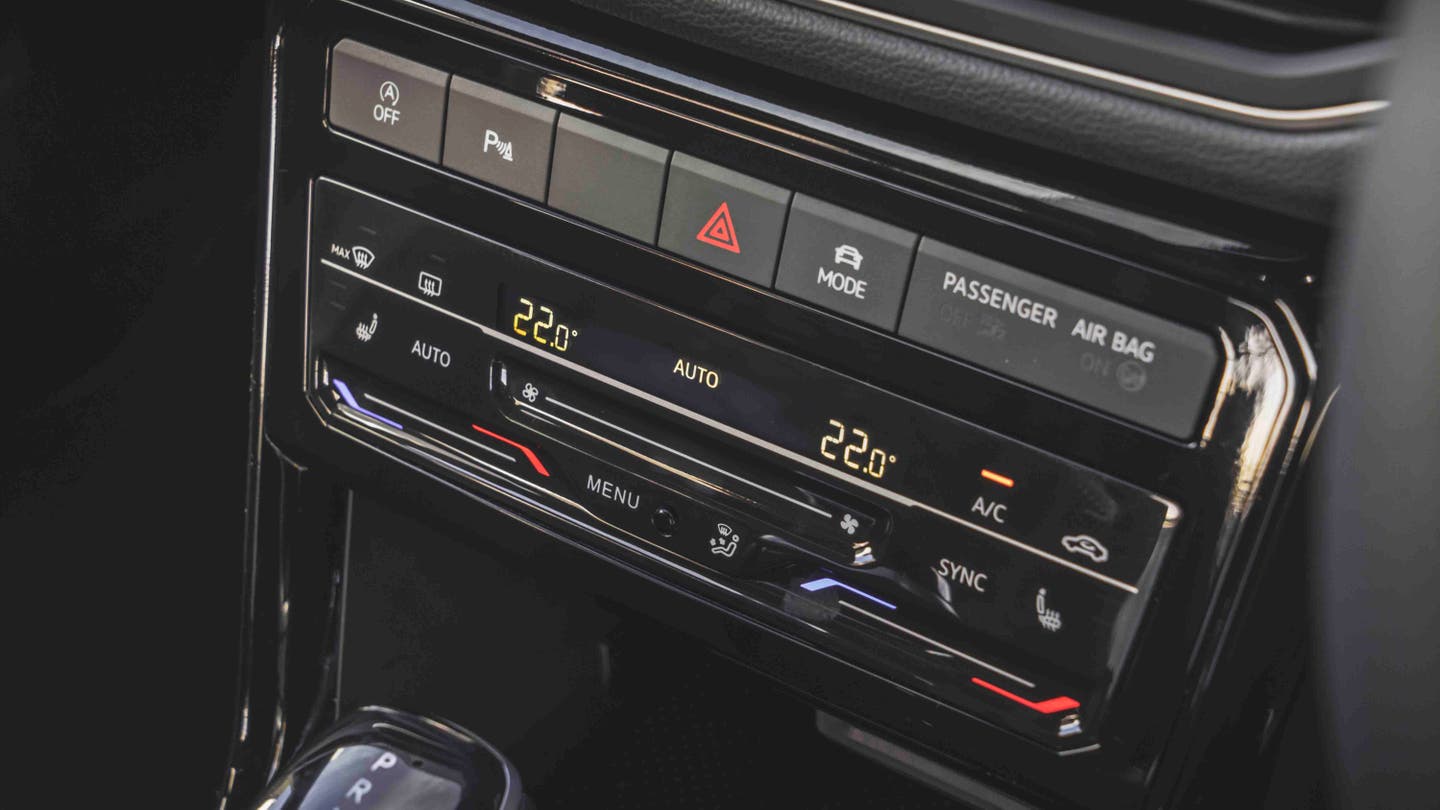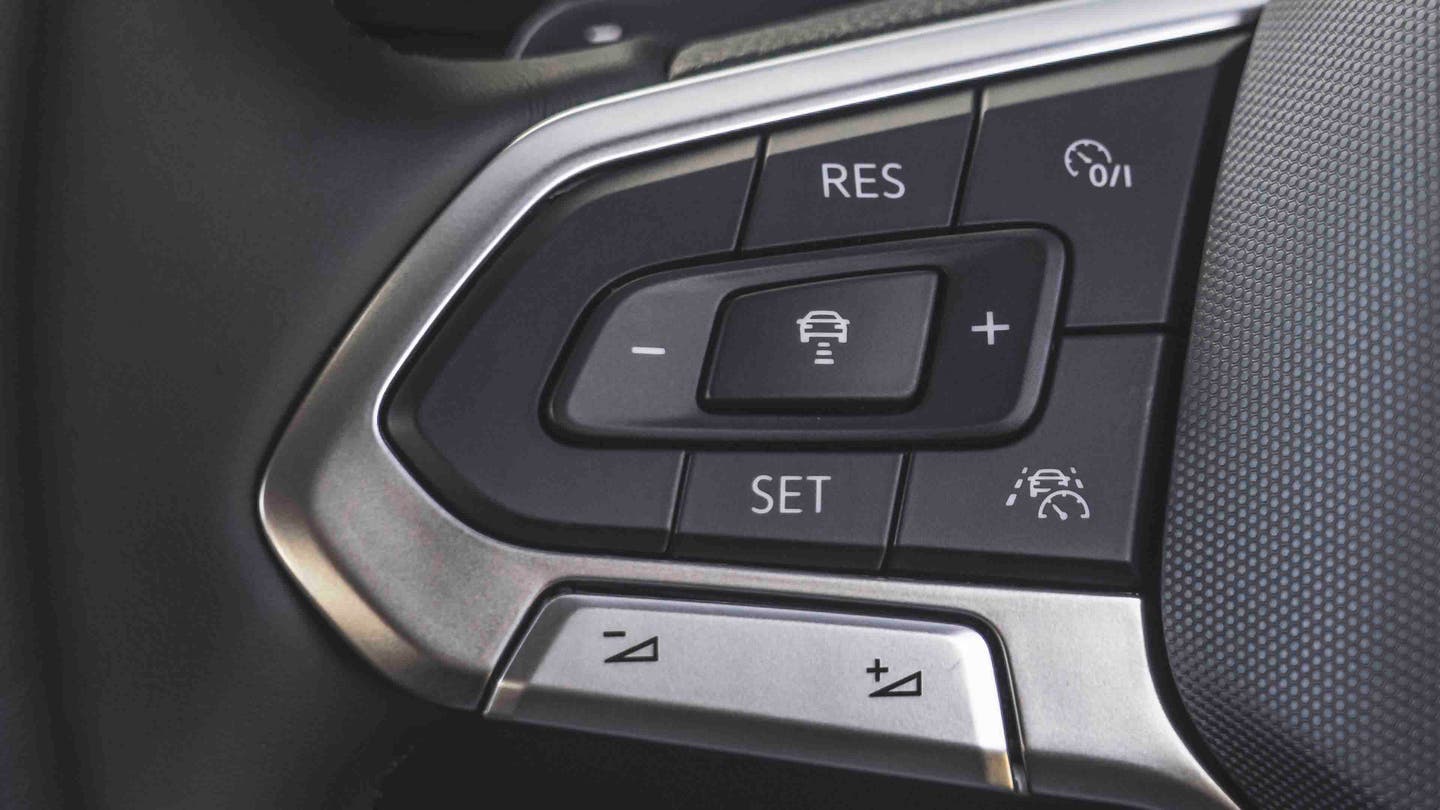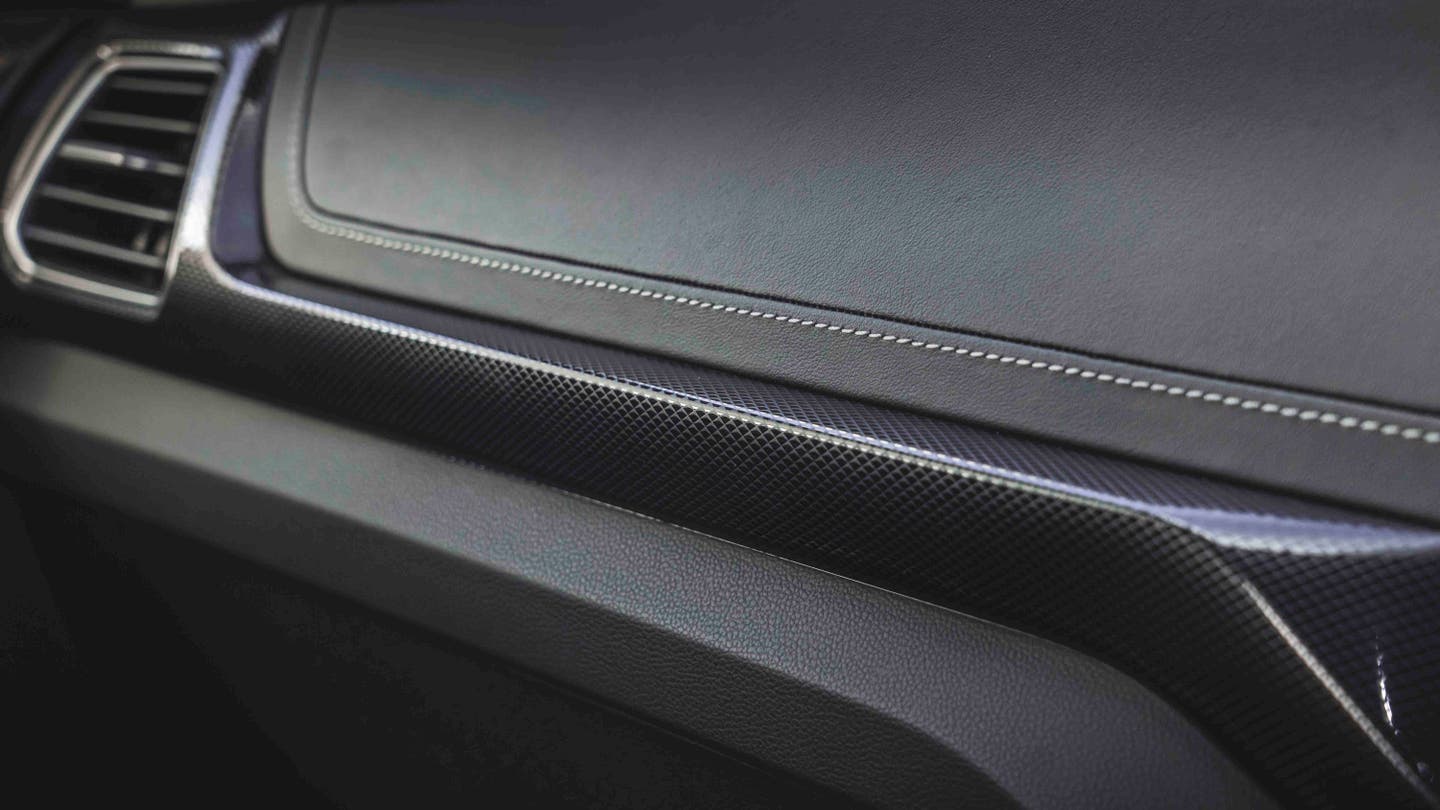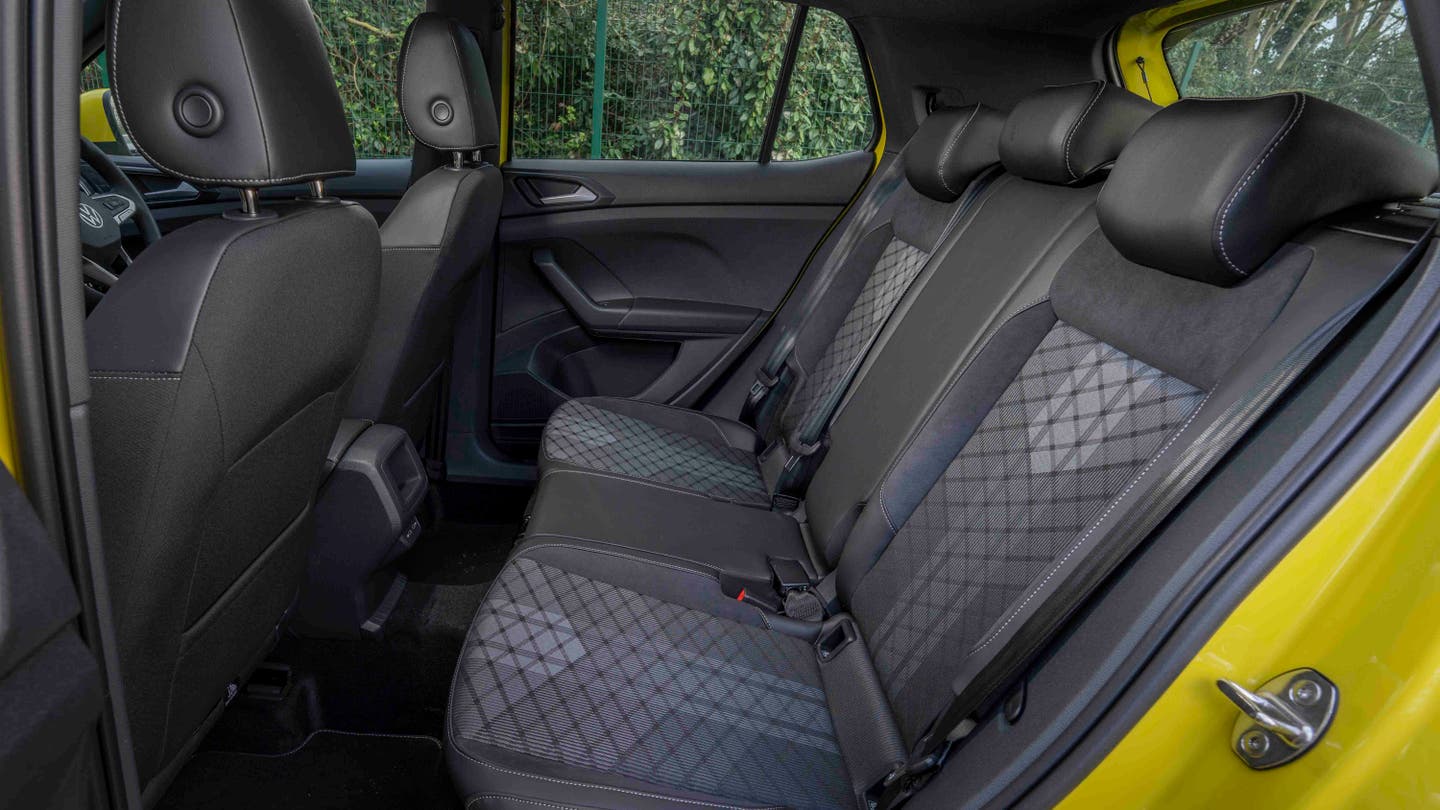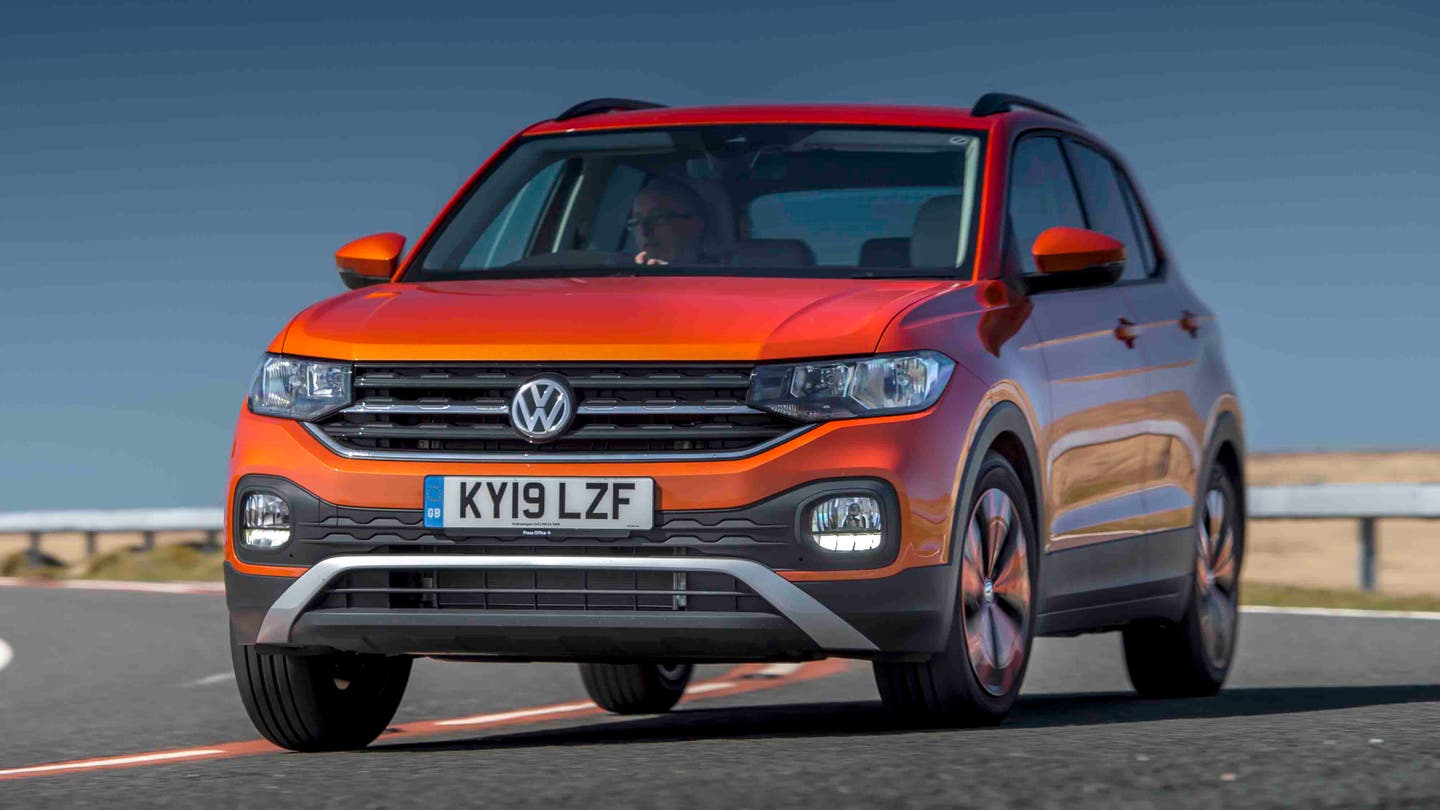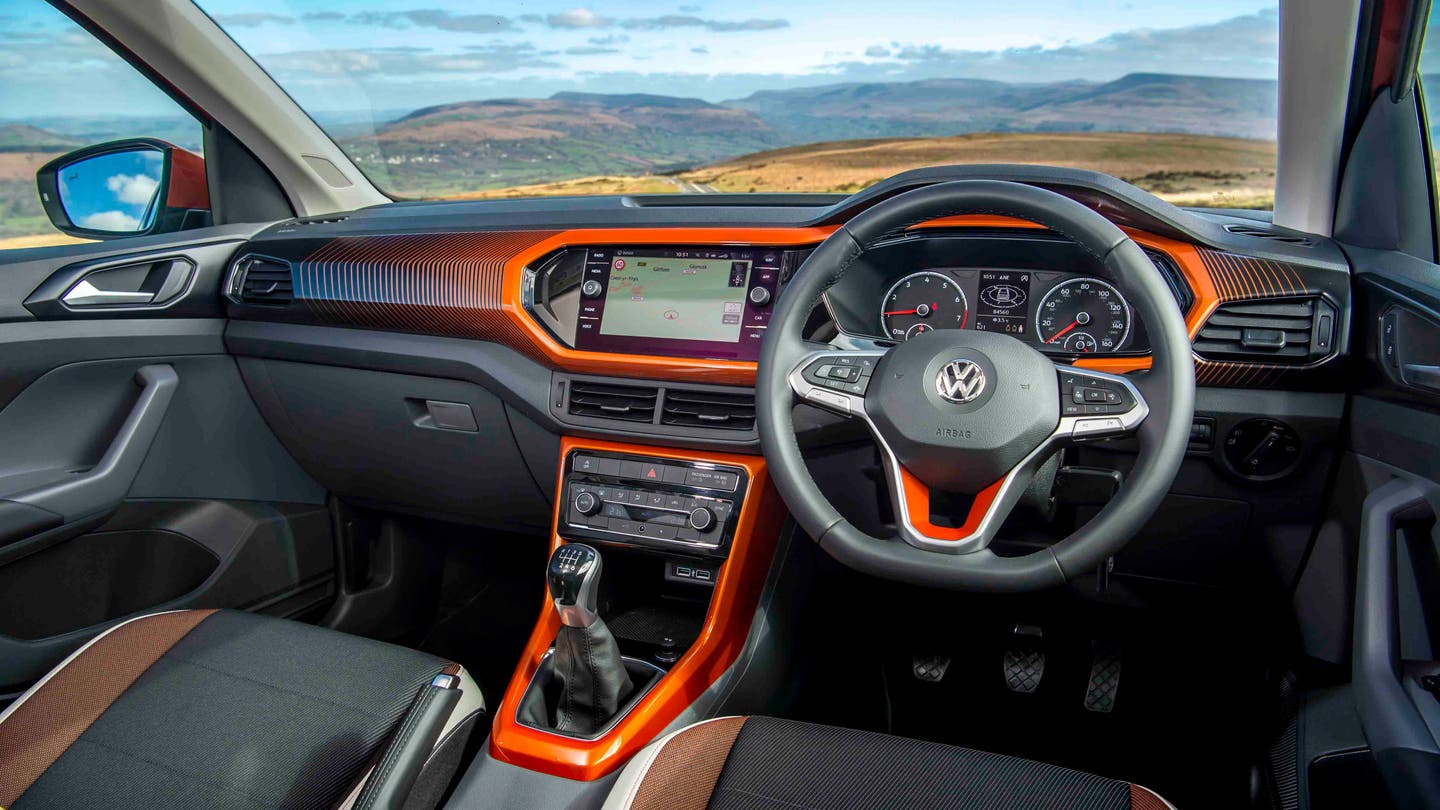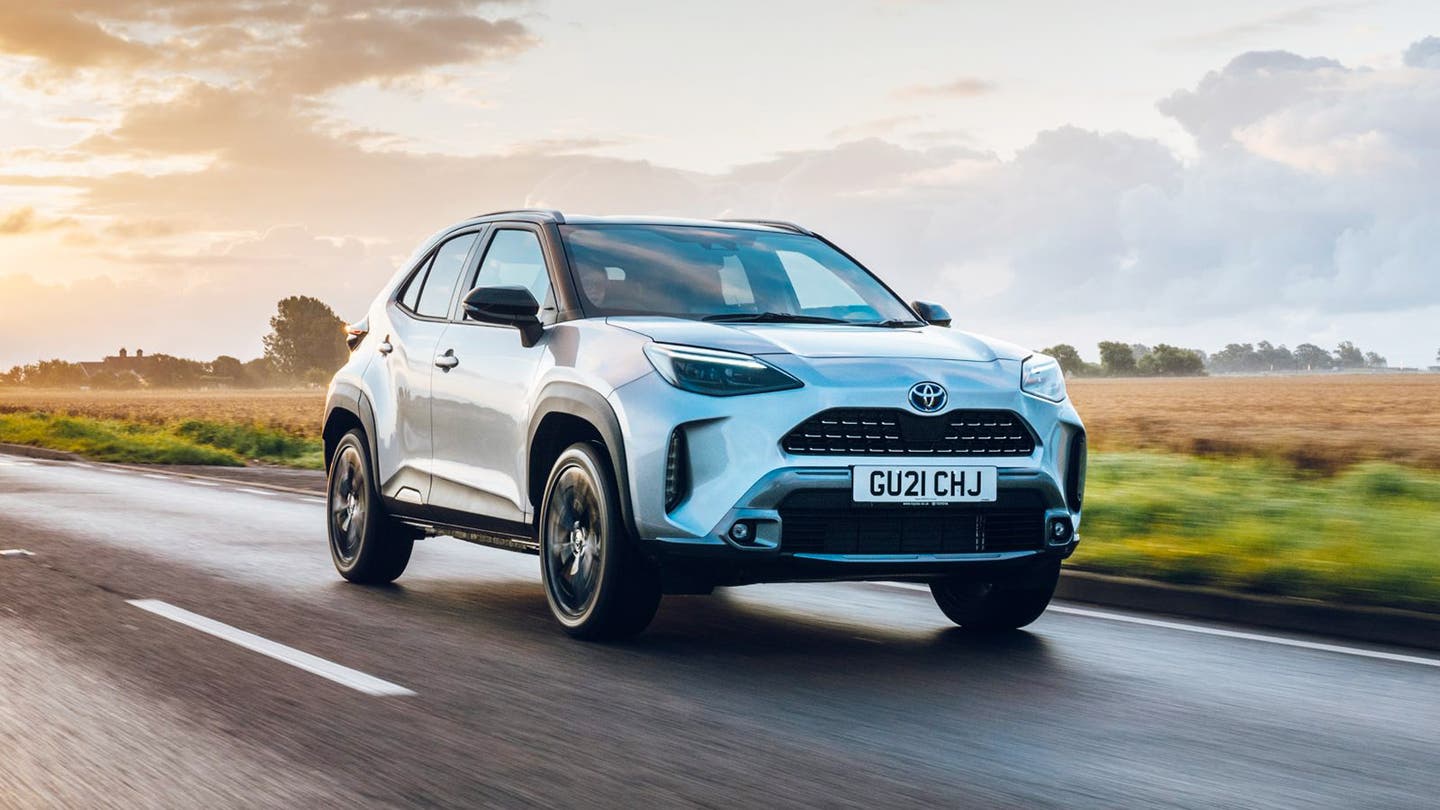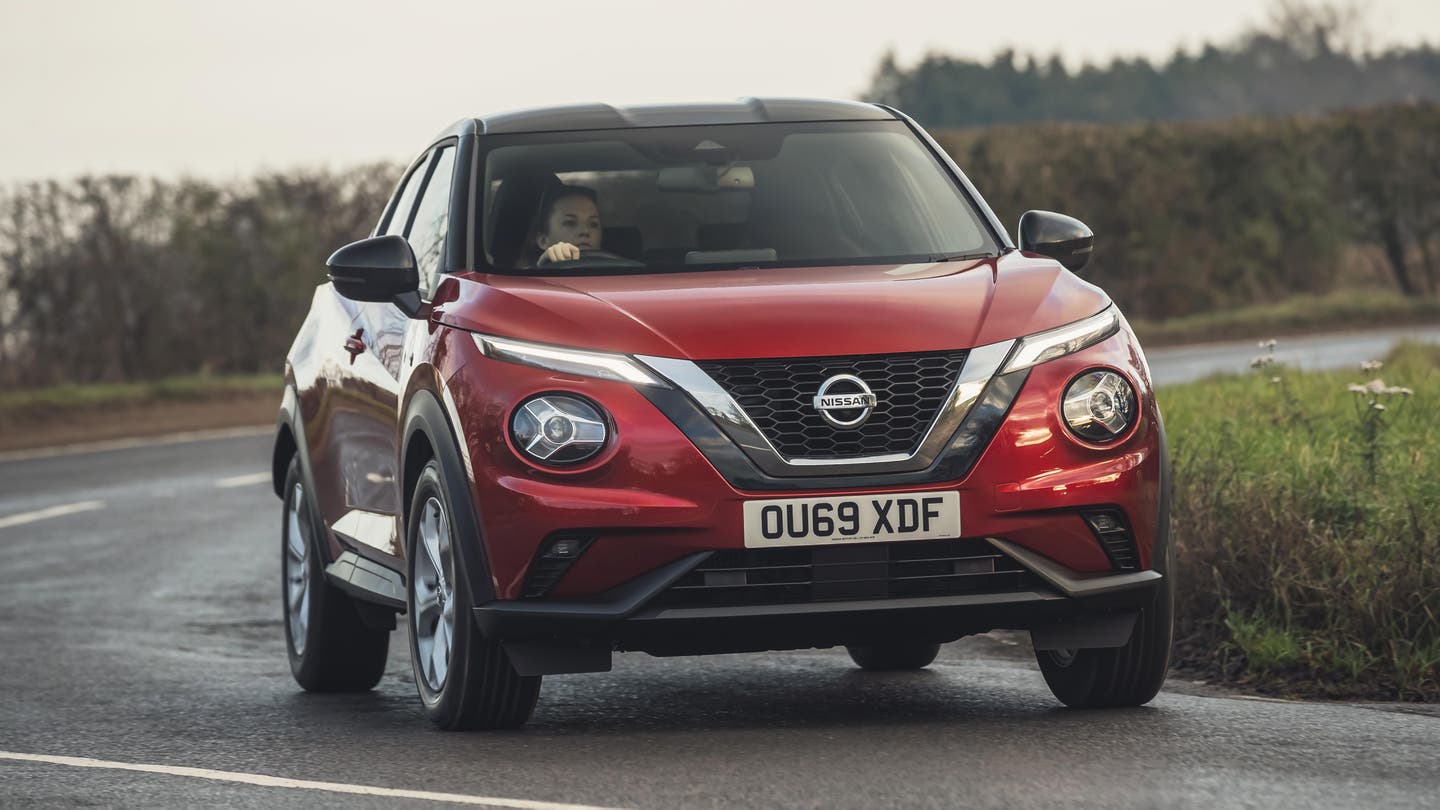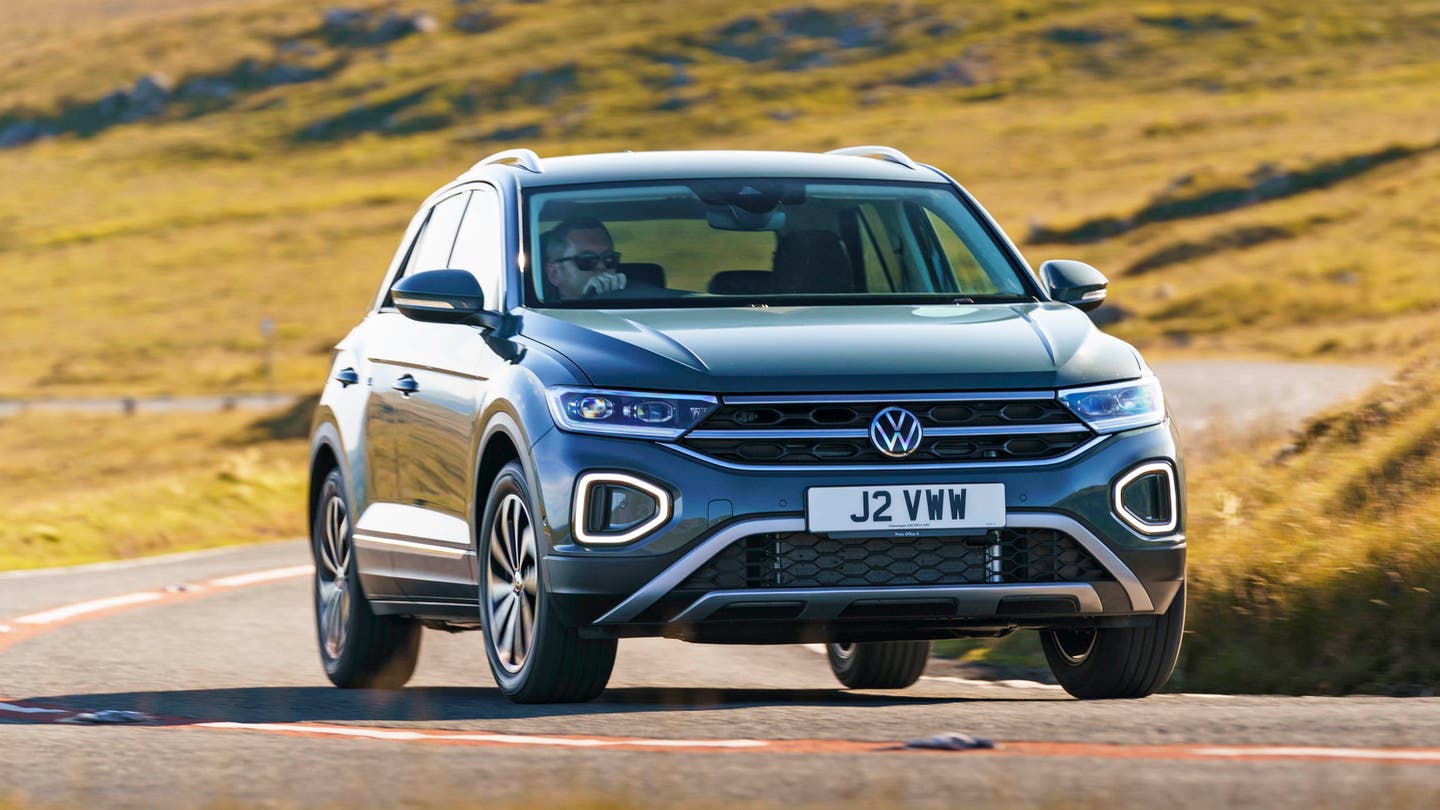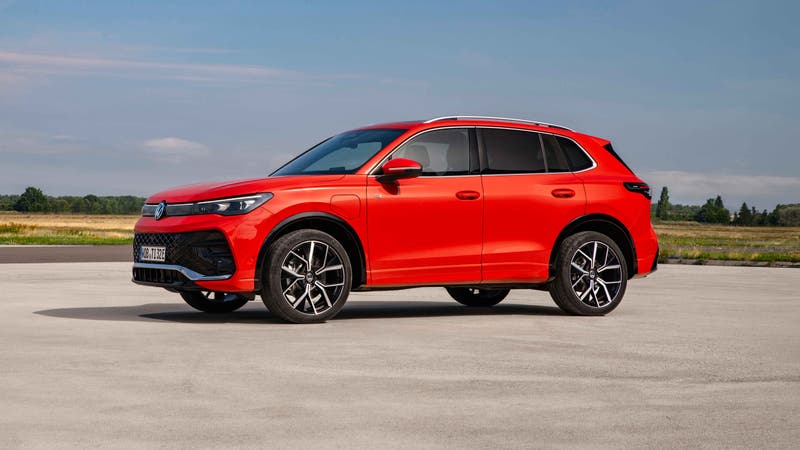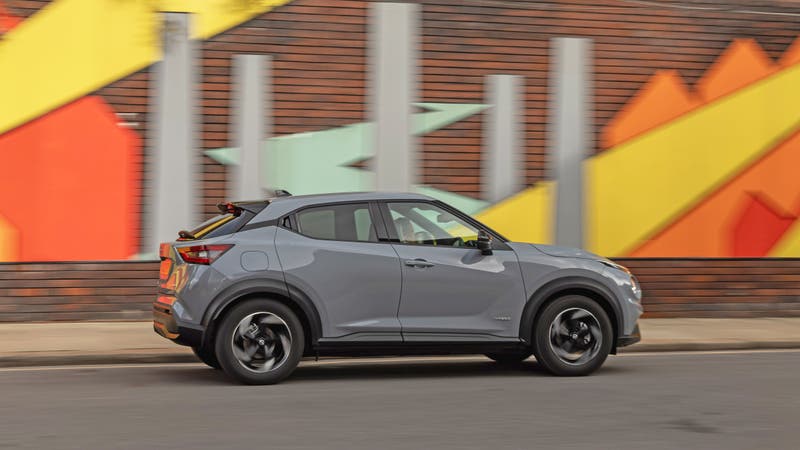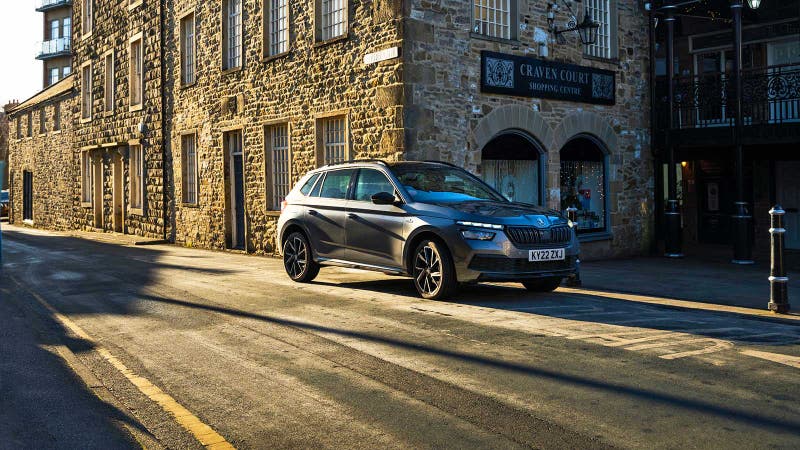
Volkswagen T-Cross interior, tech and practicality
Gallery
Comfort and visibility
Not only does the Volkswagen T-Cross’ chunky shape maximise practicality, but it ensures all-round visibility is pretty good as well. And, in turn, both of those things make the T-Cross easy to place in congested city streets and on wider roads.
The dashboard is neatly laid out and easy to find your way around. There’s not the same reliance on screens that there is in larger VWs, which is better for day-to-day life. A small frustration is that the simple air con dials have been replaced on 2024-on cars with fussy and imprecise sliders. You’ll probably find it easier to repeatedly tap on the hot or cold icon until you get to the temperature you want – but we like that you can long press the hot or cold icon to get to the highest or lowest air-con temperature.
Thanks to some patterned trim, the dashboard isn’t completely dour. It’s clearly built using materials chosen for their cost rather than plushness, but this is still a fairly cheap and small car, so this is to be expected. The upshot is that all the interior plastics should be hard-wearing and easy to clean. What’s more, VW has put softer materials where you’re more likely to touch – on the armrests and on the steering wheel, for example.
Most trims on the 2024 T-Cross get blue upholstery inserts, which also lift the interior ambiance. But all cars get a height and reach-adjustable steering wheel and manual seat adjustment, so it should be fairly easy to find your ideal driving position – which is usefully taller than where you sit in a Polo.
Standard equipment
Earlier T-Cross cars come in S, SE, SEL and R-Line trims, with increasing levels of equipment. The S trim includes alloy wheels, LED daytime running lights, air conditioning, lane departure warning and auto emergency braking, plus a touchscreen with Bluetooth and digital radio. It was later dropped.
SE steps up with fog lights, roof rails, auto wipers and lights, adaptive cruise control, bigger wheels, and an alarm. Opt for high-spec SEL and you get front and rear parking sensors, two-zone climate control rather than basic air con, LED headlights and tinted rear windows. R-Line combines the kit of SEL with a sporty look.
Look out for Move, United and Black Edition special editions, which come with a bit more kit than the SE models they’re based on.
More recent cars come in Life, Match, Style and R-Line, with Life and Style effectively replacing SE and SEL respectively. Life is better equipped than SE, mind you, with LED headlights, ambient lighting, high-beam assist and the ability to display road signs in the instrument cluster all now standard. Match adds a reversing camera, bigger wheels and keyless entry and starting, while Style swaps this for semi-autonomous driving tech.
Infotainment and audio
Every T-Cross gets a screen measuring at least eight inches across, and all but the most pared-back S trim come with Apple CarPlay and Android Auto, so you can use your phone’s apps on the car’s screen. S trim has a trick up its sleeve, though – download the free Volkswagen Connect app to your phone and you’ll be able to see the car’s status and how long until it needs a service, plus recent trips, driving style, parking information and fuel economy data.
There’s not a huge amount to play with in the infotainment screen, which is a good thing for the vast majority of drivers – though, maybe not for tech-obsessed geeks. The system includes all the major features you’d expect – including built-in sat nav from mid-range trim levels up – and makes it easy to reach these features while you’re driving.
This is supplemented by a screen in front of the driver – whether that’s a small screen sandwiched between analogue dials or a modern-looking digital instrument cluster. Whichever setup you have, you can cycle through driving data, what media source is playing and basic navigation directions, if sat nav is fitted.
The fully digital dials can look a bit bare at first, but explore the different options via the buttons on the steering wheel and you’ll find a lot of configurability, with a few different view options and info setups.
New-shape T-Cross cars get an eight-inch touchscreen as standard, but Style and R-Line upgrade to a 9.2-inch unit. Both have shortcut tiles around the outside, but this seems a bit like wasted space to us – the ‘car’ view shows very little information, while the ‘voice’ tab brings up a message to say that voice control is something you have to purchase in the VW online shop.
Rear seat space
We mentioned the T-Cross’ sliding rear seats on the first page, and we wonder how many drivers actually use them – or even know about them. We’d simply leave the seats in their standard, fully rearward position, where the T-Cross is pleasingly versatile.
Rear-seat space with the seats slid all the way back is up there with the best in class. A tall adult should be able to sit behind another tall adult with a little room to spare, as legroom is pretty commendable. Thanks to the T-Cross’ boxy shape, headroom is also perfectly fine unless you’re extremely tall.
Your rear-seat passengers don’t get any of the soft materials that front-seat occupants enjoy, but there are seatback pockets and USB sockets.
Boot space
On paper, the T-Cross offers up to 455 litres of boot space if you slide the seats fully forward. But, if do this, you lose all rear legroom and are left with an annoying gap between the boot floor and the seatbacks. You won’t fit much at all in this gap, and you’d need to remember to take whatever you’ve put there out before pushing the seats back again. We think the gap will just be a trap for crumbs and small, loose items – although we can see the sliding seats being handy for very specific moments like vacuuming out the boot.
The T-Cross’s boot is still handy with the seats slid fully back. Its 385-litre capacity is five litres more than a Volkswagen Golf and 35 more than a Polo, although some small SUVs offer even more luggage capacity. The T-Cross should easily swallow an average weekly shop or a small-ish pushchair.


